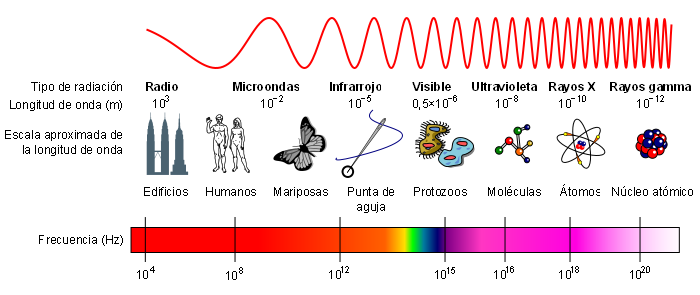The electromagnetic spectrum is called the energy distribution of the set of electromagnetic waves.
The electromagnetic spectrum extends from radiation of shorter wavelengths, such as gamma rays and X-rays, through ultraviolet light, visible light and infrared rays, to electromagnetic waves of longer wavelengths, such as radio waves. The limit for the smallest possible wavelength is believed to be the Planck length while the maximum limit would be the size of the Universe. 
True or false? (a) Electromagnetic radiation always travels at the speed of light c. (b) In an electromagnetic wave traveling in the y-direction, the electric field vector E always lies in the same direction for every location on the wave. (c) The E and B fields are perpendicular to the direction of propagation of the electromagnetic wave and perpendicular to each other. (d) Microwaves have a higher frequency than visible light. (e) An infrared photon has lower energy than an ultraviolet photon.



